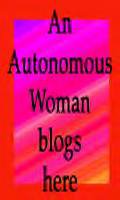Painted in Blood, an Abstract Expression of Horror

. . . .a photograph that began popping up on Web sites yesterday, of what seems to be a toilet floor covered with blood and litter, framed by a small glimpse of tiled walls. It suggests a bathroom turned into a holding cell, or perhaps a scene from a hospital or triage center, or a torture chamber. The blood on the floor instantly suggests the splatter and drip paintings of the abstract expressionists.
Newspapers have often turned to blood as a substitute for violence, showing photographs of the gore that lingers on streets long after the bodies -- too graphic to show -- have been cleared away. Here, in a photo that contains no particular information, no names, no certainty even about whether it shows what it seems to show, is the blood image in a new form. This is no substitute, no polite euphemism for what can't be shown. Blood as a substitute for death deflects horror; this blood demands answers.
Comparing blood to paint, violence to art, is dangerous, even repellent. But in one sense, the blood on this floor is exactly like the paint drippings of Jackson Pollock, who captured the visible traces of action, the visual memory of gestures. In Pollock's painting, the gestures fixed on canvas were often graceful, melodic even, with paint obeying the law of gravity with a gentle quiescence. If this is blood, we can only imagine what the gestures were.
What's powerful, and infinitely sad, about this bloody floor is the silence. Whatever happened in this room, it almost certainly was accompanied by a cacophony of pain. That's gone now. As is anyone involved with what happened there. The garbage on the floor, the opening of a toilet, suggest human beings reduced to refuse. The anonymity of those who may have suffered is absolute. Other photographs have appeared with faces decorously blacked out, a nod by those publishing the images to the dignity of the victims. Here, everything has been blotted out, and strangely enough, the dignity is now complete.
The victim is now just blood, there is no face to put on him or her, nothing we can say about what or where the wounds were, and how they happened. And in this abstraction from anything identifiable, the victim becomes completely, finally Human, not a particular man or woman, with a certain color of skin, or cut of hair, or any clothing to place him or her in the categories that we use to make sense of the faraway, the foreign or the frightening. The abstraction of blood leaves an open space for anyone looking at this picture to imagine himself or herself in its midst, to imagine, say, that the blood pooling on the floor like wax before it drains to the opening of a rank toilet is our own. And that these dull industrial tiles, with their insidious repetition of a pattern, are the last things we remembered before the lights went out.
Those who deplore the release of these images are right in that they may add no specific new evidence to a forensic or political or journalistic argument. And they draw us -- no, wrench us -- further from what Americans like to think of as "closure," the end of the shame, the end of the argument. But this one image, just a pattern of darkness on a canvas of cement and tile, opens up everything, because who can look at it without going there? If the original Abu Ghraib photographs compelled us to realize our connection to the perpetrators -- our soldiers, fighting our war -- this sad, silent image begs us to at least imagine that we are connected, in a deeper, human way, to the victims.
Picture in question at original ~~ click title
Hat tip to The O C












2 comments:
puddle
post a picture of SusanD's beautiful quilt here too soon
Phil
it is an antidote for the poison
Yes
Post a Comment